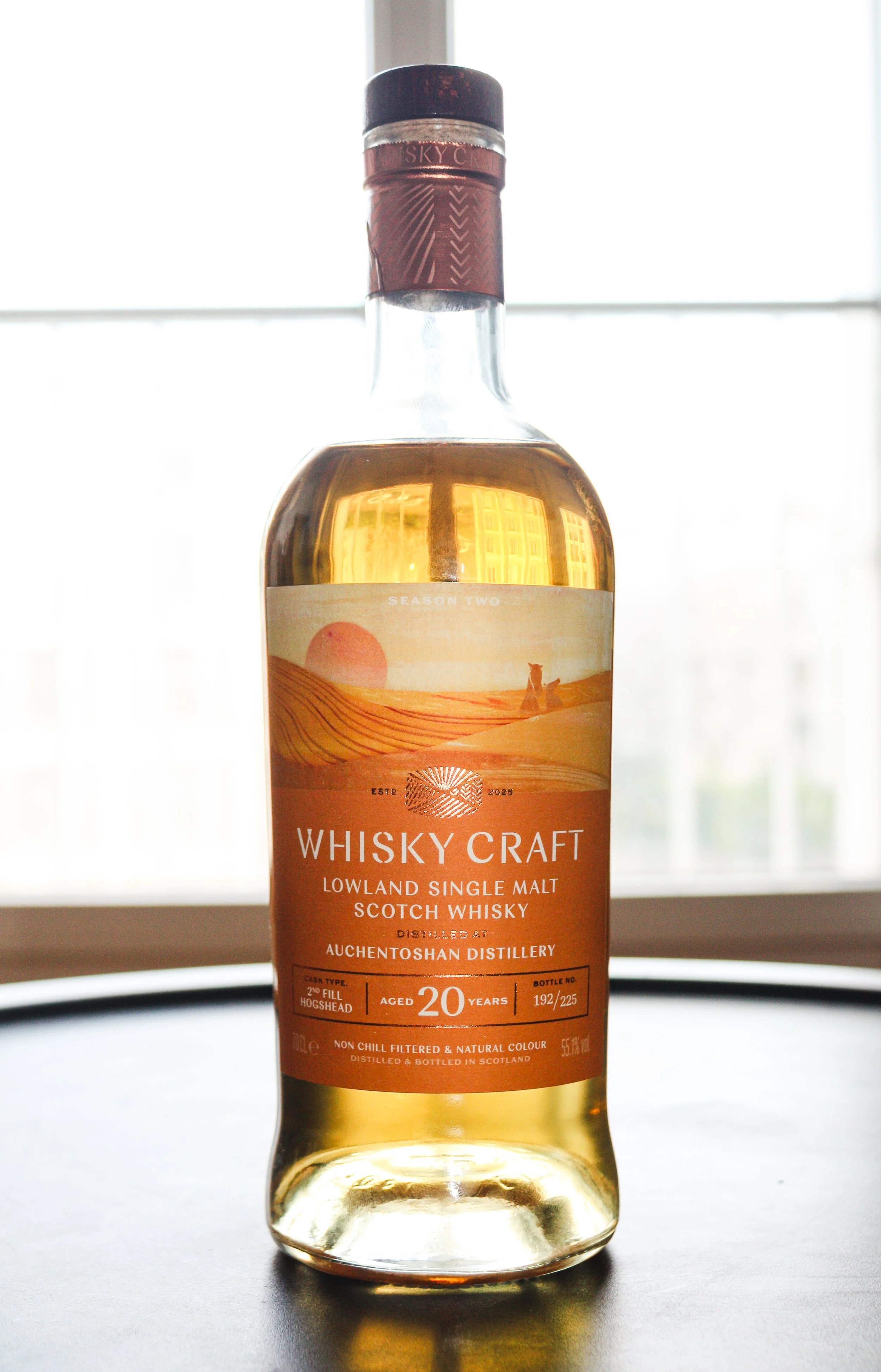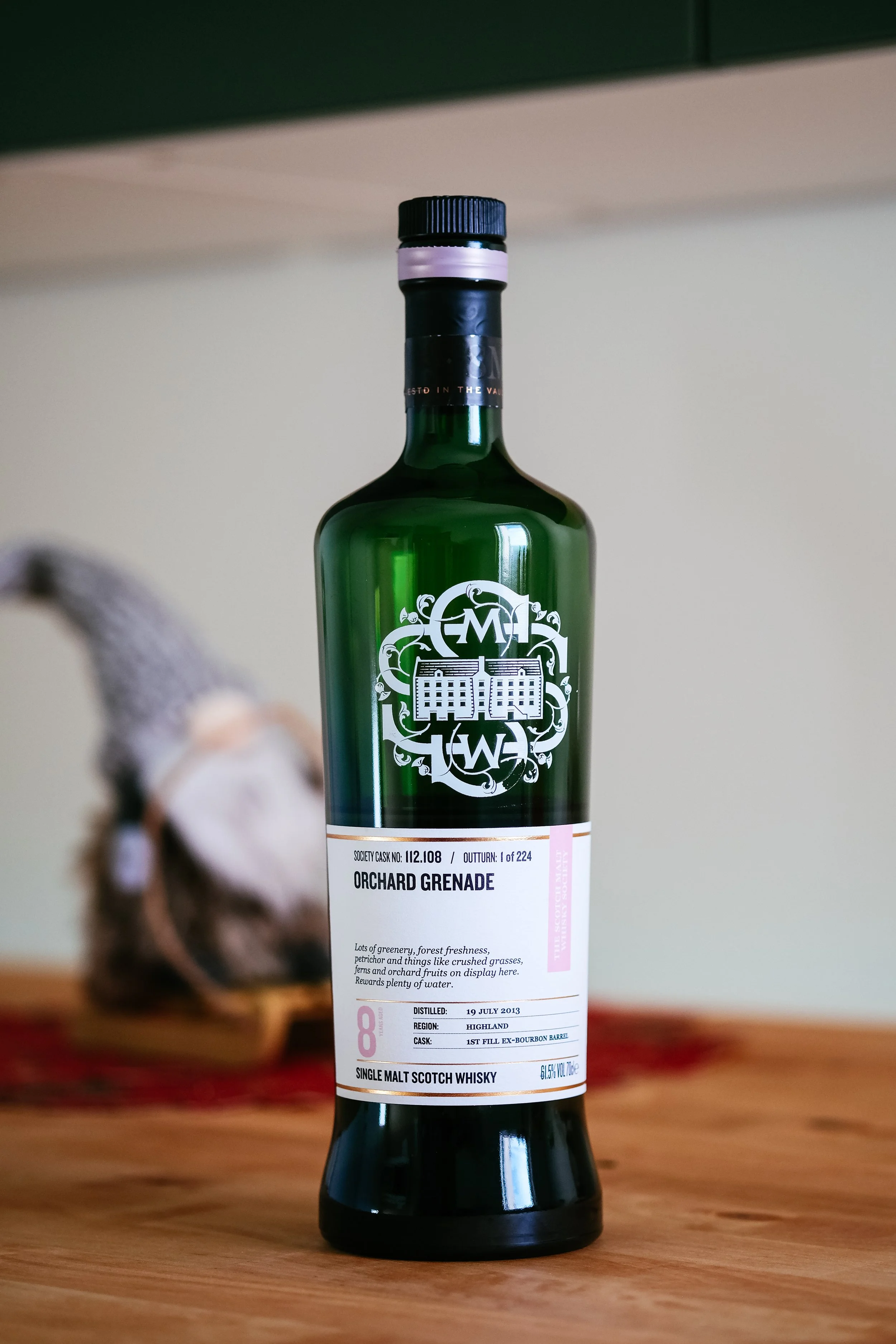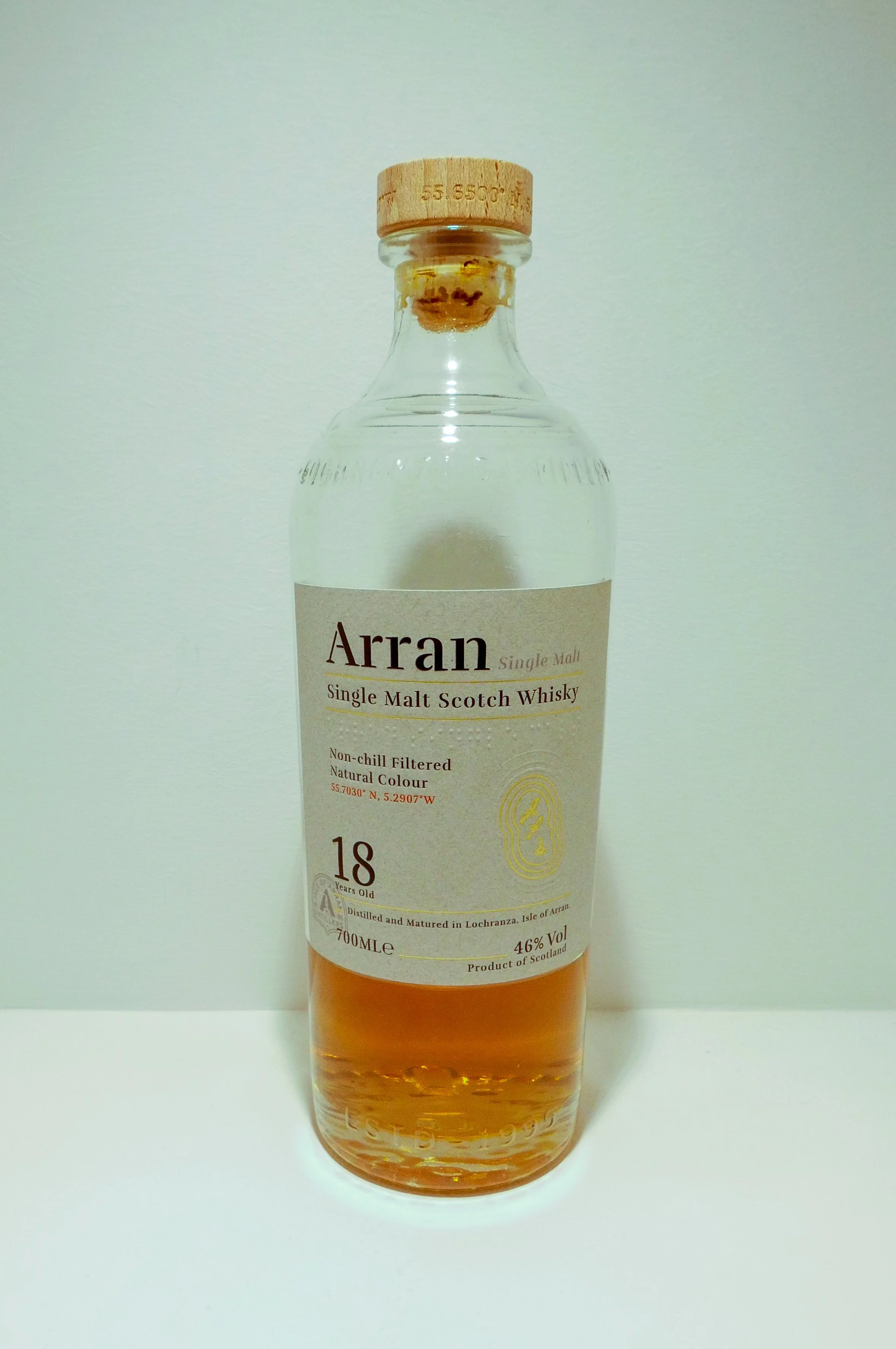North British 15yo 100º Proof
Signatory 100º Proof Series | 57.1% ABV
Score: 6/10
Good stuff.
TL;DR
A perfect bridge between scotch and bourbon
“I know what I like!”
Probably the single biggest benefit about being new to whisky is just how much there is to be excited about. Opening a new bottle means a new experience, a new step in the journey, a new exploration, a new acquaintance. The whisky world is your flavour-filled oyster to open and discover.
Particularly during those early days and years the words ‘every day is a school day’ very much apply, and they are pivotal to finding your way through literally thousands of options out there. You’ll build an olfactory ‘library’, develop your palate, gain understanding about what’s what, determine your preferences and your apparent dislikes as you move along, learning the ropes.
And while, to me, a lot of these things still very much apply with more than a decade of being ‘seriously’ into whisky, some things do tend to become somewhat of a given. Yes, the excitement when stumbling upon something that really rocks your world is still there, but the novelty factor - those moments where you get to taste things that you’ve never tasted before, become increasingly rare.
The single biggest benefit of having built some of this ‘experience’ with whisky is that you know what you like and are somewhat prepared when diving into the deeper loch of all things whisky. It can help prevent you from stumbling into potential pitfalls or making classic - often costly - rookie mistakes. I’ll share an example.
A significantly younger Earie than the one you read today once had access to a wine store located literally right around the corner. This wine shop also had a pretty decent selection of spirits, much to the delight of this, then young, whisky padawan. The thing was, with roughly a hundred or so different whiskies on the shelf to choose from; what to pick? ‘L’embarras du choix’ as the French so eloquently put it.
I ended up trying to decide between two expressions from Signatory Vintage’s independent range. There was a 43% ABV 11yo Ledaig bottled in 2004, or a 46% ABV 10yo Mortlach. As my first serious endeavours into whisky were all guided by peat and smoke, I (obviously) grabbed the Ledaig. As little as I knew about whisky at the time, I knew next to nothing about Mortlach and just about enough to know Ledaig was peaty, and also that it was about a tenner cheaper, which was good enough for me.
To this day that Ledaig remains to be one of the most disappointing bottles of whisky I ever had the misfortune to own. Little did I know that early 1990s Tobermory and Ledaig had a ‘questionable reputation’, to put things mildly. Whereas the Mortlach - I later learned upon discovering there was such a thing as Whiskybase - was ticking a lot of the boxes that earned it ‘the beast of Dufftown’ reputation. On my next visit to the store, the Mortlach - Murphy reign supreme - was gone.
Hindsight being hindsight I obviously would’ve walked out the door with that Mortlach if the situation occurred today. So there’s some things to be said about ‘experience’, for one thing that it’s the collective noun we tend to give to our mistakes.
That said, it can also lead to a false sense of comfort and can enable complacency. I know what I like, I know what’s what and don’t you try and tell me otherwise.
Review
North British 15yo, Signatory Vintage 100º Proof Series, 2nd Edition, distilled 2009, bottled 2025, first and second fill sherry butts and ex-bourbon cask matured, 57.1% ABV
£40 paid
One of the other things I learned along the way, on what we might call the whisky school of life, is that grain whiskies often leave me wanting. Perfectly pleasant at the best of times, sure, if a tad simple. I find they’re often lacking depth and complexity and quite one dimensional with a fair bit of dusty, grainy, sweetness as the highest common denominator.
Of course, I tried a few that stood out and were really engaging, interesting and fun, but usually those were the ones who’d seen the inside of oak for the better part of two decades, if not more. And I get it. Grain whisky exists mainly to cater for blends and usually cheaper blends at that, which explains why the bulk of it is filled into often well-used refill casks, as it’s mostly a case of being economical and cost efficient.
Barring the occasional exception, very few grain whiskies are deemed worthy of being put to rest in active casks, let alone active sherry casks, which are worth their weight in gold these days. And, with the sheer amount of new spirit that comes out of these mahoosive boozeplants, it would indeed be hugely expensive to put even a fraction of them into anything other than refill barrels and hoggies.
Take the one I’m reviewing today. When North British started out in the late 19th century, its production was already around 3.5 million LPA. Which at the time was massive. Today, North British is owned in a joint venture controlled by Edrington and Diageo and its capacity sits around 70 million LPA (to give you an idea, that’s roughly the combined capacity of all four of the biggest malt whisky distilleries).
Larger still, we have the absolute juggernauts of Diageo’s Cameronbridge in Fife and Wm Grants’ Girvan in Ayrshire, cranking out around 130 million and 110 million LPA respectively. So when it comes to grain whiskies it’s fair to assume that if it’s going to end up in a bottle of Johnnie Walker Red, J&B or Ballantine’s, any darkness in colour will likely be artificial. Either by adding E150a spirit caramel colouring or from the Coke or Dr Pepper it’s mixed with.
Despite all these preconceptions, assumptions and clichés firmly rooted somewhere in the back of my mind, I went ahead and bought a 15 year old North British from Signatory’s 100 proof series. Indeed; of all the great value options in Signatory’s 100 proof series, I went for a grain whisky.
Fifteen years in grain whisky maturation terms almost seems like reversed cat years when compared to malt whisky; you divide it by seven rather than multiply it. Because everyone knows grain whisky can only become good and interesting after at least 20 years. Right?
Score: 6/10
Good stuff.
TL;DR
A perfect bridge between scotch and bourbon
Nose
Quite ‘bourbon-esque’: lots of vanilla and honey, adding sweetness to a dusty element reminiscent of both corn dust and sawdust. Some polish and wax notes and sweet roasted nuts alongside an equally gentle sweet lactic – cheese note. I’m well aware I’ve written ‘sweet(ness)’ three times now (four!), but that’s really what binds and ties everything together.
But it’s all pleasant and engaging.
With added water everything sort of blends together in a honey and vanilla driven, grainy ‘muck’ and, to be clear, I mean that in a good way.
Palate
Wood, honey and vanilla – again everything tastes a bit - yet not completely - bourbon-y, especially on the arrival, right until the high ABV kicks in, adding a clear and somewhat feisty peppery note all over things. Let’s add some water…
Ah! Only now that typical metallic and mineral grain note appears, albeit only ever so shy. Luckily, I’ll add, as I’m not very keen on it. It comes with a dry and woody texture before going into a clinging, oaky and bitter-sweet finish with echoes of red fruit, betraying the sherry casks involved.
The Dregs
What this lacks in complexity, it makes up for in terms of flavour and delivery.
Overall, if you need convincing that grain whiskies can be fun and interesting, this one might be worth a punt – especially for the price - £40 for 57.1% ABV.
I’ve heard from quite a few people that the price of these 100º Proof series releases add considerably to the bang for buck factor as many feel that what’s been released has been decent and good, yet seldom spectacular.
I can’t add much to that as this is actually the first release within the entire series I’ve got my hands on here. But I will say this; for a 15 year old grain whisky - a toddler by grain whisky standards – this one is considerably better than some others roughly twice its age. Maybe that’s due to the fact that this one has at least seen the inside of something other than refill bourbon casks, although the actual ‘mark’ the sherry casks left I feel is, overall, somewhat limited.
Rather than impacting flavour, I feel they may have helped round things off and push the maturation along, if that makes sense. Maybe it’s because, of all the massive grain whisky distilleries, North British is actually one I tend to engage with. Much more than, say, Cameronbridge or Invergordon in any case. I’m enjoying my time with this, as it sits somewhere nicely in the no man’s land between bourbon and scotch.
If you’re a bourbon lover, chances are this will go down quite well. Coming in from the opposite angle; if you love scotch malt, but have a hard time getting to terms with all things bourbon, this one might just help you appreciate and understand it a bit better.
And it shouldn’t come as a surprise seeing how North British continue to use primarily corn (maize) as a base ingredient whereas most others are relying on wheat. So it bridges that gap rather nicely. Not every whisky has to be super busy, super complex, ultra subtle or very engaging. This one is just nice, tasty and fun while bringing enough to the table to not become just another background sipper.
Score: 6/10
Tried this? Share your thoughts in the comments below. EA
-
Dramface is free.
Its fierce independence and community-focused content is funded by that same community. We don’t do ads, sponsorships or paid-for content. If you like what we do you can support us by becoming a Dramface member for the price of a magazine.
However, if you’ve found a particular article valuable, you also have the option to make a direct donation to the writer, here: buy me a dram - you’d make their day. Thank you.
For more on Dramface and our funding read our about page here.



































